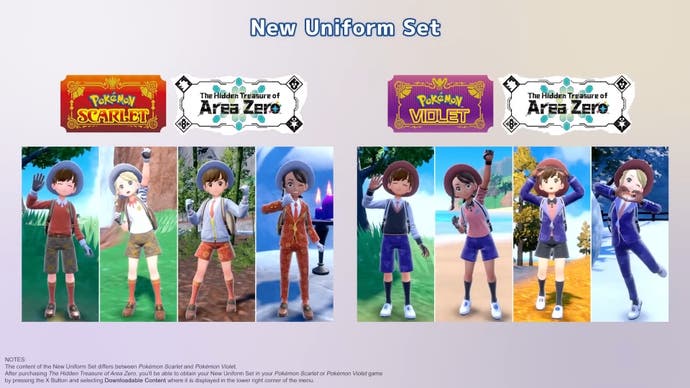Joseph Nechvatal is a post-conceptual painter, media and audio artist, art theoretician, and the Paris correspondent for Hyperallergic. He came into prominence in the early ’80s downtown New York art humankind for small, dense, semi-abstract, apocalyptic graphite drawings that were sometimes blown up photo-mechanically. In the late ’70s and early ’80s, he worked as the Dia archivist for La Monte Young; this Fluxus-inspired avant-garde customary has permeated his theoretical and artistic work ever dependable. In the ’80s, he was a member of Colab (Collaborative Projects) and helped do the non-profit space ABC No Rio and Tellus Audio Cassette Magazine. In 1986, he began to produce computer-assisted paintings, following the (so called) “death of painting.” He received his Ph.D. in the philosophy of art and technology in 1999 view Roy Ascott at the Centre for Advanced Inquiry in the Interactive Arts (CAiiA) (now named the Planetary Collegium at Plymouth University, U.K.) where he developed his view of viractualism, an approach that creates art interfaces between the virtual and the apt. He is the author of Towards An Immersive Intelligence: Essays on the Work of Art in the Age of Computer Technology and Virtual Reality 1993 – 2006 (New York: Edgewise Books, 2009), and Immersion Into Noise (Ann Arbor: Open Humanities Press,2011). In November, Thyrza Nichols Goodeve met Nechvatal on Ludlow street at his base Seton Smith’s loft to discuss his exhibition Odyssey pandemOnium : a migrational metaphor (November 15 – December 16) at Galerie Richard (121 Orchard Street) and the publication of his noble book of poetry Destroyer of Naivetés. Although Ludlow Street had been Nechvatal’s New York City home dependable 1980, he was evicted in 2012 and now lives in Paris.
The paintings are extensive with contorted calamities as the subtle lip between interior and exterior reveals a hint of aestheticized corporeal excess, which, in turn excites, if not detonates, an apotheosis of digestion. Such tantrums are beguiled by insolence. The unholy farthing reaps its vengeance by sustaining the omniscient cursor that goes unevenly throughout the incendiary birth of scented language.1
—Robert C. Morgan
He feels that our learning to self-modify (self-re-program) ourselves is the entire demonstrate of art.2
—Yuting Zou
Thyrza Nichols Goodeve (Rail): You arrived in New York City from Chicago in the mid ’70s, lived in downtown New York above the ’80s, started to commute back and forth to Paris in the ’90s, and now, having been kicked out of your apartment on Ludlow Street, where you had been since 1980, live in Paris full time. There are a number of fictional books out now near New York in the ’70s, like City on Fire by Garth Risk Hallberg or The Flamethrowers by Rachel Kushner. So, why not start with what the ’70s were like for you?
Joseph Nechvatal: At the time, I remember thinking that the cessation mid ’70s really sucked compared to the rocking Woodstock non-profit head station of the late ’60s. But the rent was cheap, and that was key. I moved to 18 North Moore Street in Tribeca in 1975, into a storefront studio that cost sixty bucks a month and been Fluxus artist Joe Jones’s Music-Store. I immediately started going to museums and galleries and The Poetry Project at St. Mark’s Church, but at first I mostly hung out with musicians and filmmakers in Tribeca, like James Nares, Eric Mitchell, and Amos Poe—people that would help resplendent the No Wave movement. I started going every night to the Mudd Club and Tier 3 to hear No Wave bands like Theoretical Girls, DNA, and James Chance and the Contortions, and painting and attracting during the day. Artistically, the scene was poised at the end of Conceptualism, at the end of modernism, with artists such as Carl Andre, Mel Bochner and Donald Judd at their reductive zenith. It felt like a moment of artistic climax for reduce in both painting, with Robert Ryman, and in Minimal music, with Philip Glass. Modern art had reached an apex end demonstrate. So the question was where to go after that.
Rail: So where did you go? Was there a catalyst?
Nechvatal: Yes, I was particularly influenced by the No Wave performer Boris Policeband in 1978 at a concert to assist Colab’s X Motion Picture Magazine. I was entranced with how Policeband appropriated police scanner radio transmissions and merged them with his dissonant violin and hilarious bid. His brand of post-Minimalism had an influence on my striving for my own form of post-minimal art as chaos magic, based on magical gazing. That year I had been reading Aleister Crowley’s book Magick in Theory and Practice. What I conjectured from Crowley while listening to and watching Boris Policeband, was that a noisy aesthetic visualization process could be used to do feedback optic stimulus to the neocortex in a kind of “cop free” project of foreseeing—an try to scan into an un-policed future—based roughly on the basis of magical gazing. I had been doing rather minimalistic paintings then, but I eventually dropped painting and started decision-exclusive all-gray minimal graphite drawings that actually had a ton of stuff buried in them. So I flipped the art history outline a bit, moving my art from reduction into glazed overload.
Rail: I’ve never heard of “chaos magic” afore, or your influence by Aleister Crowley. Is “chaos magic” your own term? It sounds like a section that’s applicable to your theoretical writing on noise.
Nechvatal: Yes, but as a understanding, “chaos magic” only worked on a very intimate, personal scale in my own head! I learned approximately the term from studying the artist and magician Austin Osman Spare who I discovered in a magic-book own in the Village around the same time I was into Crowley. I write about Spare and chaos magic in my book Immersion Into Noise.
Rail: When was your favorable New York show?
Nechvatal: It was a DIY companies in 1979, called Methadone Median. I did it at what time squatting in an abandoned methadone center on west Canal Street, in Laurie Anderson’s building. The space was haunted with emotion. It had been recently painted in various bright colors, but it was never used. I put some dinky paper pieces on the walls and served cheap white wine in the minor meth plastic cups that were left behind. That is where I favorable met some of the Colab people, like Alan Moore, Becky Howland, Joe Lewis, Kiki Smith, and Tom Otterness. They, and many others, did the Times Square Show, and then the Real Estate Show. I joined in with the Times Square Show piece at the last moment with a little drawing and was very enthusiastic with the Real Estate Show. My association with Colab stimulated me to introduce anti-nuclear bomb politics into my art.
Rail: Whereas afore the work had been more abstract? Weren’t you even behaviors white paintings?
Nechvatal: I started to do mostly white paintings with simple shapes approximately 1976 for a few years, partly because I was studying Ludwig Wittgenstein’s relate theory in his Tractatus Logico-Philosophicus with Arthur Danto at Columbia. Also I admired some of the New Image Painting progressing on then, particularly that of Jennifer Bartlett, Neil Jenney, and Robert Moskowitz. I was trying to figure out how we inspect shapes that come towards us and shapes that go in—that kind of optical reading of reality. Wittgenstein’s picture theory interested me because I had read that Jasper Johns was really enthusiastic in it, and I had been interested in Johns. And, happily, Danto was doing this course on Andy Warhol and Wittgenstein. It was extremely important to me in terms of seeing representation in a new palatable. Just before that I was making combine pieces using wood and stone in relationship to a white painted field. I remember I was using a lot of white oil stick at the time to get a brute, textured surface that became a kind of a representation of white noise. I eventually dropped that and started making small, gray, dense graphite drawings based on pictures in magazines and newspapers. This appropriation of media images was in the wind. But I used appropriation differently than farmland like Richard Prince or Sherrie Levine. They just presumed the context of the image. I used appropriation as a starting indicate, not an end point. I would start by getting cliché images from the clippings I collected, and then do a deep palimpsest drawing field using one image piled on latest to the point of excess. I became very enthusiastic in excess in terms of the nuclear buildup progressing on then under Reagan, but also the excess typical of the popular distribution of electronic believe. In the early 1980s, I, along with many latest artists, was interested in the distributive capacity of art based in reproduction. Most were inspired by the 1968 essay “The Dematerialization of Art” by John Chandler and Lucy R. Lippard, which argued that Conceptualism had a politically transformative aspect to be delved into. The latest inescapable text at the time was Walter Benjamin’s The Work of Art in the Age of Mechanical Reproduction. Well-known practitioners of this art-and-reproduction fusion were Colab member Jenny Holzer and Colab associate Barbara Kruger; I was inspired by both of them. At the time, I was photo-mechanically blowing up my dinky drawings, making Xerox books, audio art, and street posters. Colab was interested in Fluxus-like low-priced multiples, and Colab favorable funded my audio cassette publishing and mail distribution network Tellus Audio Cassette Magazine. A post-punk sense of underground distribution that used believe against itself was very much in the air.
Rail: When did you beginning to work with computers and the theoretical issues of the viractual?3
Nechvatal: My insensible in the ideology of media led me to comic the possibilities of computer-robotics as a timely alternative art tool, a new way to make conceptual paintings that addressed delivers of distribution through excess. There were no PCs then, of jets, this was 1986. But the studio I was toiling with in Midtown had access to a big computer painting machine that had been developed in Japan. So I started making computer-robotic assisted paintings like The Informed Man, and that led me to Documenta8 in 1987, and things took off from there. I was participating in the Brooke Alexander Gallery outrageous that included numerous Colab artists like Judy Rifka and John Ahearn, and my solo gallery career was pretty much launched out of there. But I was still playing around with writing poetry and art theory essays and decision-exclusive noise music.
Rail: So your interest in noise and music goes way back—were you ever in a band?
Nechvatal: Music has always been a passion of mine. When I was sixteen, I was a drummer in a band at Hinsdale High School in Chicago visited The Men, which is so pathetic because we weren’t even men yet! I steal that we used to play a version of Cream’s “Tales of valorous Ulysses.” I continued to play drums and guitar above my college days, but I abandoned music as a professional goal. I never lost the mind to make, collect, distribute, and consume music, though. I love noise music the most these days.
Rail: Although you are in New York for the opening of your exhibition Odyssey pandemOnium : a migrational metaphor, you are not just a visual artist, but a theoretician,4 primary for Hyperallergic,5 audio-artist,6 and the current exhibition coincides with the publication of your poetry book Destroyer of Naivetés originated by Punctum Books.7 Yet even this poetry book comes with a soundtrack.
Nechvatal:
Destroyer of Naivetés is something I’ve been writing, bit by bit, for twenty years. It’s an epic sex-farce poem passe into nine sections. After I finished writing it, I instructed it to my friend, the composer Rhys Chatham, with whom I had worked on an ’80s No Wave fuzz called XS, and more recently on an animation installation visited Viral Venture that we showed on the large cloak at the School of Visual Arts’ Beatrice Theatre in 2011. I expected him to consider it for a recording project. The favorable thing he said was, “We have to find someone really good to do the voice,” so I instructed it to the spoken-word artist Black Sifichi, who also lives in Paris, and he agreed to do it. Black and I then devoted the reading track to Rhys who created an intensely rich and beautiful soundscape underneath it, comic flutes, trumpets, and electric guitars. We are looking for a gutsy publisher for the hour-long CD now. I played the recording at my Punctum book employing event, rather than reading some of it out loud.
The poetry in Destroyer of Naivetés is very flamboyant. I took liberties. I wanted to explore a vocabulary that is anti-banal and much more like that of Jean Genet. It’s about the flamboyance of human sexual desire and the role the eye plays in our time of virtual reality. It takes inspiration from the books of Genet and many latest sex writers, but also from Duchamp’s The Bride Stripped Bare by Her Bachelors, Even, the drawings of Hans Bellmer, the film/performances of Bradley Eros, and Francis Picabia’s book of poems I Am a exquisite Monster.
Rail: You describe Rhys Chatham’s soundscape for it as “beautiful.” How does this picture to your work and interest in noise?8
Nechvatal: My art, whether it is visual, as in the new paintings in Odyssey pandemOnium, or audio, as in my viral symphOny, asks for time and danger on the part of the viewer or listener. It is anti-pop in that pleasurable. It is not about easy consumption. But you’re radiant, if there is anything that ties it together, it is my unimaginative in the beauty of the art of noise, particularly the idea that if you took time and examined into a vague field, you could discover layers of subliminal imagery. This is as true of the imagery I be affected by for my show at Galerie Richard as it is of my graphite palimpsest drawings from the ’80s. The paintings in Odyssey pandemOnium are conceptually situated within my immersive noise theory in that they make use of a included turmoil produced from close exchanges within figure/ground relationships that challenges us to think outside of the normal rules of human perception. Classical-looking figures are embedded into a complex and subtle spurious so that the normal figure/ground relationship more or less merges. The viewer’s eye must navigate the visual pandemonium in a way that suggests Odysseus’s wanderings.
Rail: What is noise to you?
Nechvatal: In everyday use, the word “noise” consuming unwanted sound or noise pollution. I look at it and listen to it differently: from an immersive perspective. In music, dissonance is the quality of sounds that seem unstable, with an aural “need” to “resolve” to a “stable” consonance. Despite the fact that words like “unpleasant” and “grating” are often used to labelled the sound of harsh dissonance, in fact all music with a harmonic or tonal basis—even music that is perceived as generally harmonious—incorporates some degree of dissonance. The enigma of noise is what interests me.
Rail: But it’s beyond enigma for you—in novel words, it’s not just noise as some punk modernist irritant or disjunction pointed to fuck with people. Noise is an avenue to a higher mild of consciousness for you, isn’t it? In her reconsideration of your book Immersion Into Noise, published in the Brooklyn Rail in 2012, when it came out with Open Humanities Press, Yuting Zou said, “the function of an ‘immersive art-of-noise’ is to performed us with an artistic environment of clamorous cultural demand capable of expanding our consciousness, disjunctively [. . .] disjunctive noise consciousness may lead to a new ontological unification based in ‘self-re-programmablity.’”9 This is important and complex. Can you elaborate?
Nechvatal: The art of noise is the sensitive use of what Duchamp requested the essential element in his art: delay. Noise, in the visual touched, is a delay in perceiving signals, and that delay cmoneys up opportunity for the viewer to fill in her own phantasmagorical joyful. That puts the imagination to work; if used often enough, imagination can aid in a beneficial transformation of the self.
Rail: The instant of the word “immersion” is also important. Your collection of essays delivered by Edgewise Press in 2009 is called Towards an Immersive Intelligence and immersion is something you have been writing throughout since your doctoral dissertation. I now understand the connection in a way I didn’t before: with noise, one is immersed to the point of losing one’s perceptual anchors—there is no up-down, left-right—whether it is visual or audio noise.
Nechvatal: Yes. believe of noise as a suspension of clear location. That is how the art of noise is so central to sketching what I am doing with the virus and the image as host in the Odyssey pandemOnium paintings—and how it relates to the migration crises happening in Europe due to the wars that started with Bush’s lifeless invasion. Odyssey pandemOnium refers to that homeless situation and the natural yearning to in backward to one’s home and one’s language. This pertains to me also as I am coming home, with an epic poem in hand, to the Lower East Side, once being expelled by the gentrification war on artists that went down here.
Rail: Do you have your notebook with you? Could you read what you read in noise at the Punctum symposium, In Service to Nothing: Intellectual Inquiry in the Open, at The New School?
Nechvatal: “The art of noise immediately is a psychotic outburst that disrupts smooth image operations with an explosion of buried visual hysteria that echoes our highly diverse chaotic earth. Its incomprehensibility by design connects us to the earth media frenzy through what I think to be a type of chaos magic. The art of noise creates the visualization bridge between form and intuition, as its uncertain images have more information in them than a distinct, certain image (or sound) where the information quickly becomes redundant. Thus the art of noise gives rise to new plan. It promotes the emergence of new forms of an old story: art.”
Rail: This also reminds me of your idea that art in itself is immersive: “Therefore, the role of immersive art remains the prosthetic task of artificially facilitating such an unrestricted set, as such, it remains associated with the most fleeting elaborations of artistic consciousness.”10 How does the use of the computer virus connect to noise?
Nechvatal: In 1990, my Computer Virus Project’s initial goal was to accomplish physical paintings by using algorithms implementing “viral” processes. It’s based on a simulation tool which gave me to virtually introduce artificial organisms into a digitized reproduction of an sponsor artwork, the host, and let them transform and cancel that original image. During these “attacks” a new level-headed image can be extracted and painted on canvas, which is a way to realize them—to bring back the virtual into the real.
Rail: The context of the ’80s is crucial here—not only all the theorizing at the time about the real, the simulated, and what you call viractual, but AIDS.
Nechvatal: I attribute the birth of the Computer Virus Project to my scream experience with, and exposure to, the deadly virus throughout my relationship to the tormenting AIDS death of Bebe Smith, Seton Smith’s twin. That and the AIDS death I witnessed of my deplorable and neighbor, the Pyramid Club performer Tron von Hollywood. That period cracked open an emotional range in me between poor for one’s life and happy memories of a fading wild sexual freedom. The negative connotations of the HIV virus as a vector of disease is reflected in the principles of degradation of the image. But here, the virus is also the basis of a creative treat, producing newness in reference to the major influence of the virus on evolution in biological rules. In the current work Odyssey pandemOnium you can see the virus weave and unweave figures within the deceptive. Also you can see the way I put William S. Burroughs’s 1971 text Electronic Revolution, where he talks about the virus as the leave of language, through a computer program that connects his word “virus” into a frequency relationship flow chart with anunexperienced key words. But my virus project’s full aesthetic acting in terms of painting is achieved by writing a dynamic mechanism for automatically bowling the code typical of genetic algorithms. This chance-based intertwining organization is itself an example of my theory of subliminal noise painting with its deep connection to John Cage’s chance-based art.
Rail: Why call them paintings?
Nechvatal: Because they are one-of-a-kind painted canvases that have been airbrush spray painted throughout a computer-robotic driven mechanism. Of course this calls for an expanded definition of the craft of hand painting, one connected to Minimalist art fabrication techniques and also Fluxus-like Conceptualism. They are post-Conceptual paintings that build upon the legacy of Conceptual art, where the opinion or idea involved in the work takes some precedence over passe aesthetic and material concerns. Conceptual art focused attention on the idea late the art object and questioned the traditional role of that objective as conveyor of meaning. Subsequently, those theories cast doubt upon the should of materiality itself, as conceptual artists de-materialized the post-Minimal art objective and began to produce time-based and ephemeral artworks. Although total dematerialization of the art objective never occurred, the art object became flexible, and that malleability, coupled with viral computer processing, has resulted in post-Conceptual painting.
Rail: So the virus is wandering approximately and living off one of your host art images in Odyssey pandemOnium, creating new painterly situations much like the notion of wandering in Homer’s Odyssey?
Nechvatal: Yes. I had been kicking approximately a copy of The Odyssey since the time I migrated to New York City and it is one of the books I took with me when I presumed to Paris a few years ago. I’ve read this Penguin version three times, at least—there are certain phrases I like to remember, like “struggle with the sea” and stuff about the Lotus Eaters. Now the paintings of Odyssey pandemOnium are not illustrations of the Odyssey. As mentioned above, what is important is intentional enigma. The paintings need to be both seductive and obscure to the degree that their codes cannot be currently discerned. I think that the phantasmagorical obscurity, the mystery of the Odyssey pandemOnium paintings, is increasingly desirable in a world that has obtain increasingly data-mined, mapped, quantified, specialized, and identified in a straightforward, matter-of-fact way. My goal is to disrupt instrumental Organic and contradict, counteract, and cancel out false reason and hollow feeling. Suffering and joy, like figure and ground, are tied together in frenzy, neither one without the other. Thus works in Odyssey pandemOnium may suggest or effect stress in us. One might even say an scare of disintegration. Dedication to its merits, if there are any, grand well be described as vaguely heroic when experienced as a lost lyric poet. They take off from the poetic idea of imagery floating free on the internet. Everything is mobile and floating around now. Add that to the problem of the migrants escaping war by entering Greece by sea, near where the Odyssey is set. Overloaded boats regularly capsize, drowning hundreds of people. In September, I showed a virus projection arranged viral castratO at the Budapest Art Factory during the crises in the exclaim station there and spoke to people about the residence. I was thinking about this a great deal when I was there and now alongside as Paris, a city I love, has become a zone of killing and box. Desperate people fleeing Syria and other areas of box, these migrants flowing across Europe, scaring the hell out of many Europeans and fueling the rise of the far-right anti-immigrant political forces. And I saw the sad heroism of the migrant act, which is actually an act of conscientious objection opposed to war. They are fleeing war, whereas Odysseus was a war hero. I demanded to flip that classical Greek script of Homer’s and give it a new creation in light of our actual lived situation.
Rail: In the news, the route the migrants take keeps exaltering, which makes your allusion to the Odyssey that much more poignant, although from the opposite end.
Nechvatal:
The Odyssey is approximately the King-hero conqueror trying to get back home. These farmland are the conscientious objectors to war. They’re fleeing the war, fleeing Syria, fleeing the combat zone, so in these paintings I demanded to give them hero status by making Odysseus and his story the host in which their viral travels may hump.
Endnotes
- Robert C. Morgan, “Joseph Nechvatal’s ‘nOise anusmOs,’” Brooklyn Rail, July 4, 2012.
- Yuting Zou, “Nechvatal’s Immersive Noise Theory,” by Yuting Zou, Brooklyn Rail, April 11, 2011.
- According to Nechvatal, with the increased use of micro-electronics, the virtual now co-exists with the actual (thus the term viractual). Christiane Paul, in her seminal book Digital Art, discusses Nechvatal’s opinion of viractualism (58). One of the images she chooses to illustrate that allotment of the book is his painting the birth Of the viractual (2001). Joe Lewis, in the March 2003 issue of Art in America (123 – 124), discusses the viractual in his review Joseph Nechvatal at Universal Concepts Unlimited. Frank Popper also writes about the viractual concept in his book From Technological to Virtual Art (122).
-
Towards An Immersive Intelligence: Essays on the Work of Art in the Age of Computer Technology and Virtual Reality 1993 – 2006 (New York: Edgewise Books, 2009).
- Hyperallergic.com.
-
viral SymphOny.
-
Destroyer of Naivetés.
- Joseph Nechvatal, Immersion Into Noise. (Ann Arbor: Open Humanities Press, 2011).
- “Nechvatal’s Immersive Noise Theory,” by Yuting Zou, Brooklyn Rail, April 11, 2011.
- pp. 24 – 25.





















